Tag Archives for " general aviation "
Garmin Autoland Named 2020 Finalist for Esteemed Robert J. Collier Trophy
Our ground-breaking Autoland system — part of the AutonomiTM family of autonomous safety-enhancing technologies — was selected as a 2020 Robert J. Collier Trophy finalist by the National Aeronautic Association (NAA). For over a century, the Collier Trophy has been the benchmark of aerospace achievement and is awarded annually to recognize “the greatest achievement in aeronautics or astronautics in America.” Autoland is the world’s first certified system of its kind with the ability to activate during an emergency situation to autonomously control and land an aircraft without human intervention1.
“We are extremely honored and proud that Autoland has been selected as a finalist for the renowned Robert J. Collier Trophy,” said Phil Straub, Garmin executive vice president and managing director, aviation. “The extensive history of this award has recognized some of the most impactful achievements in aviation, and we are humbled to have Autoland considered among them. Being chosen as a finalist for the greatest aerospace achievement of 2020 would not be possible without the steadfast dedication of the Garmin team, as well as Piper, DAHER, and Cirrus, in addition to the regulatory agencies working closely with us to bring this potential life-saving technology to market.”
In the event of an emergency such as pilot incapacitation, a passenger can activate Autoland to land the aircraft with a simple press of a dedicated button, should the pilot no longer be able to perform their duties as pilot in command. Autoland can also activate automatically if the system detects no pilot interaction. Once activated, the system immediately calculates a flight path to the most suitable airport and runway, while avoiding terrain and adverse weather, initiates a stabilized approach and automatically lands the aircraft.
Piper Aircraft received the first FAA Type Certification of Garmin Autoland on the G3000® equipped M600 SLS in May 2020. In July 2020 DAHER completed the first European Union Aviation Safety Agency (EASA) certification and the second FAA certification of Autoland on the G3000® equipped TBM 940. Cirrus Aircraft, the 2017 Collier Trophy winner, certified the first jet aircraft with Autoland in August 2020, the Vision Jet equipped with Perspective Touch+.
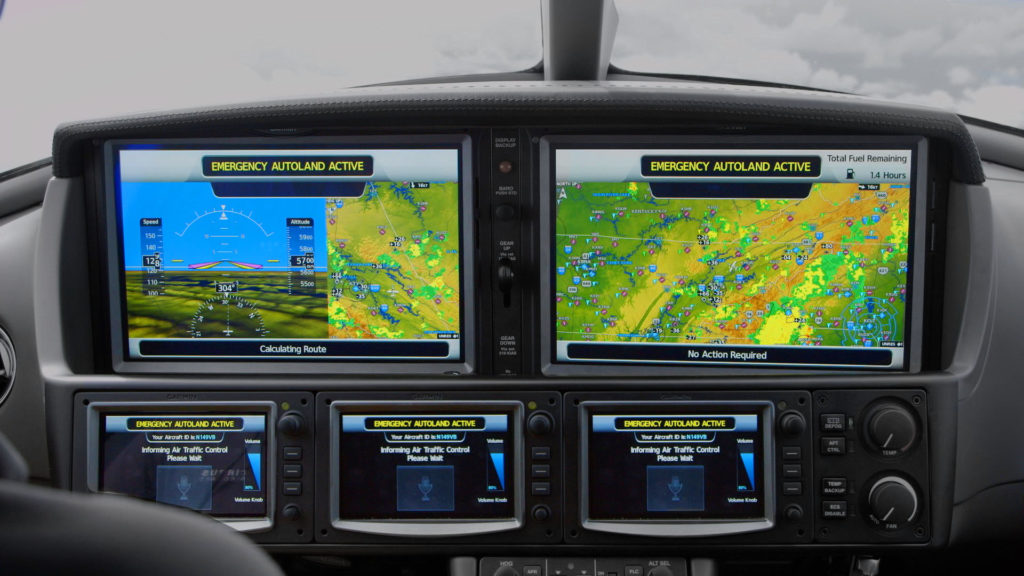
We are committed to building on the mission of bringing innovations to the industry, furthering the vision of Wilbur and Orville Wright, whose resolve and commitment to heavier-than-air flight sparked the current-day modern transportation movement. Several significant accomplishments and innovations of previous Collier Trophy winners helped lay the groundwork for what is now Autoland, including: the Global Positioning System Team in 1992; the Radio Technical Commission for Aeronautics and the development of the modern-day ATC system in 1948; Elmer Sperry’s development of the initial autopilot building blocks; and William Lear’s development of the first jet autopilot in 1949. We believe this is only the beginning, as it continues to innovate and make advances to create new and exciting possibilities for air travel in the future.
The NAA is a non-profit, membership organization devoted to fostering America’s aerospace leadership and promoting public understanding of the importance of aviation and space flight to the United States. The NAA’s Collier Trophy Selection Committee will meet virtually in June and publicly announce the 2020 Collier Trophy award winner following their selection.
For additional information about Autoland and the Garmin Autonomi family of automated flight technologies, visit www.garmin.com/Autonomi.
1.See Garmin.com/ALuse for Autoland system requirements and limitations.
The post Garmin Autoland Named 2020 Finalist for Esteemed Robert J. Collier Trophy appeared first on Garmin Blog.
https://www.garmin.com/en-US/blog/aviation/garmin-autoland-named-2020-finalist-for-esteemed-robert-j-collier-trophy/
FLYING Magazine Honors Garmin Autoland with Editors’ Choice Award
FLYING Magazine honored our revolutionary Autoland system — part of our Garmin AutonomiTM family of autonomous safety-enhancing technologies — with a 2021 Editors’ Choice Award. Autoland is the world’s first certified system of its kind with the ability to activate during an emergency situation to autonomously control and land an aircraft without human intervention1.
Each year, FLYING’s Editors’ Choice Awards celebrate an elite collection of aircraft and products that demonstrate significant innovation and technological advancements. For 2021, FLYING chose to honor the collaboration between organizations in the efforts required to achieve certification well as highlighting the importance of working together to drive innovation forward for the industry.
“We are humbled to receive this award for Autoland from such a revered publication like FLYING,” said Carl Wolf, Garmin vice president aviation sales and marketing. “This award recognizes a decade’s worth of passion and dedication exhibited by the Garmin team who never stop innovating in ways that help make aviation safer. Even more, we are proud to receive this recognition along with our aircraft manufacturing collaborators Piper, DAHER, and Cirrus, who shared the same vision to bring this life- saving technology to the industry.”
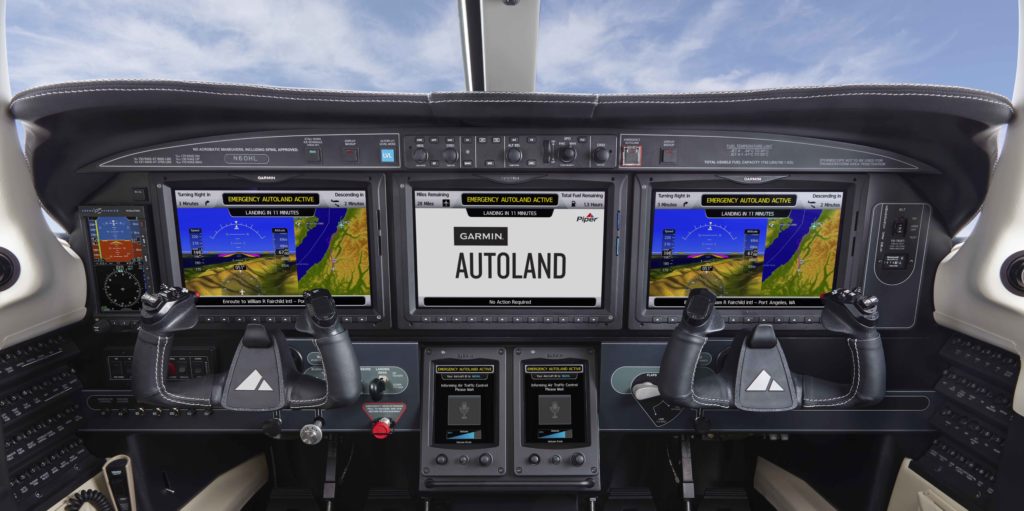
In the event of an emergency such as pilot incapacitation, the pilot or even a passenger on board can activate Autoland to land the aircraft with a simple press of a dedicated button. Autoland can also activate automatically if the system determines it’s necessary. Once activated, the system immediately calculates a flight path to the most suitable airport and runway, while avoiding terrain and adverse weather, initiates an approach and automatically lands the aircraft.
This year’s recipients of FLYING’s Editors’ Choice Awards will compete for the FLYING 2021 Innovation Award, an honor presented in conjunction with EAA AirVenture, July 26 through August 1, recognizing the most innovative product to have reached the business and general aviation market the previous year.
The first Autoland system for general aviation aircraft, Garmin Autoland has received Federal Aviation Administration (FAA) certification in the Piper M600, the Daher TBM 940, and the Cirrus Vision Jet as part of the G3000® integrated flight deck. European Union Aviation Safety Agency (EASA) approval was also granted to Daher with the TBM 940.
For additional information about Autoland and the Garmin AutonomiTM family of automated flight technologies, visit www.garmin.com/Autonomi.
The post FLYING Magazine Honors Garmin Autoland with Editors’ Choice Award appeared first on Garmin Blog.
https://www.garmin.com/en-US/blog/aviation/garmin-autoland-wins-flying-magazine-editors-choice-award/
Garmin Pilot Training Team Expands 2021 Opportunities
Our pilot training team is offering expanded pilot training opportunities for 2021, including virtual training options through June 2021 and plans for the resumption of in-person training starting in August. A variety of opportunities are available ranging from self-study materials, webinars, eLearning courses and instructor-led training offered for the GTN Series, G500/G600, G500/600/G700 TXi
Series, G500/G600, G500/600/G700 TXi , G3X Touch
, G3X Touch , and Garmin integrated flight decks. Our instructor-led courses provide pilots with a hands-on approach to learning Garmin avionics in a virtual or in-person classroom environment taught by a team of dedicated and experienced flight instructors.
, and Garmin integrated flight decks. Our instructor-led courses provide pilots with a hands-on approach to learning Garmin avionics in a virtual or in-person classroom environment taught by a team of dedicated and experienced flight instructors.
Professional instructor-led training
In the fall of 2021, our aviation training team intends to resume classroom training offered for all levels of experience at our headquarters in Olathe, Kansas assuming COVID-19 protocols can be safely followed. The health and safety of our customers and associates remains paramount to Garmin. We will continue to monitor the situation and communicate options to all registered attendees in advance if the current situation continues into the fall. To see the full calendar of training events and information on purchasing these classes, please visit www.fly.garmin.com/training.
- GTN Series: Explore the capabilities that Garmin’s GTN and GTN Xi series of navigators provides in this one-day virtual training class, or two-day in-person classroom training. This class is intended for both novice and experienced aviators using scenario-based training that builds on knowledge obtained through the GTN 2.0 eLearning course. The cost to attend the virtual GTN training class is $495, and the cost for the in-person classroom training is $550.
- GTN and Flight Display: This one-day virtual training class, or two-day in-person classroom training, includes instruction on the GTN/GTN Xi navigators and TXi series, G3X Touch and the G500/G600 displays. The training focuses on flight planning and instrument procedures for those that are both new to the GTN or just looking for a refresher, building on knowledge obtained through the GTN 2.0 eLearning course. The cost for the virtual training class is $625, and the cost for the in-person classroom training is $700.
- G1000®/G1000 NXi: With an emphasis on flight planning, instrument procedures, vertical navigation, and the automatic flight control system, this one-day instructor-led virtual training class, or two-day in-person classroom training, explores the vast capabilities of the G1000 integrated flight deck, building on knowledge obtained through G1000 NXi eLearning course. The cost for this virtual course is $700, and the cost for in-person classroom training is $825.
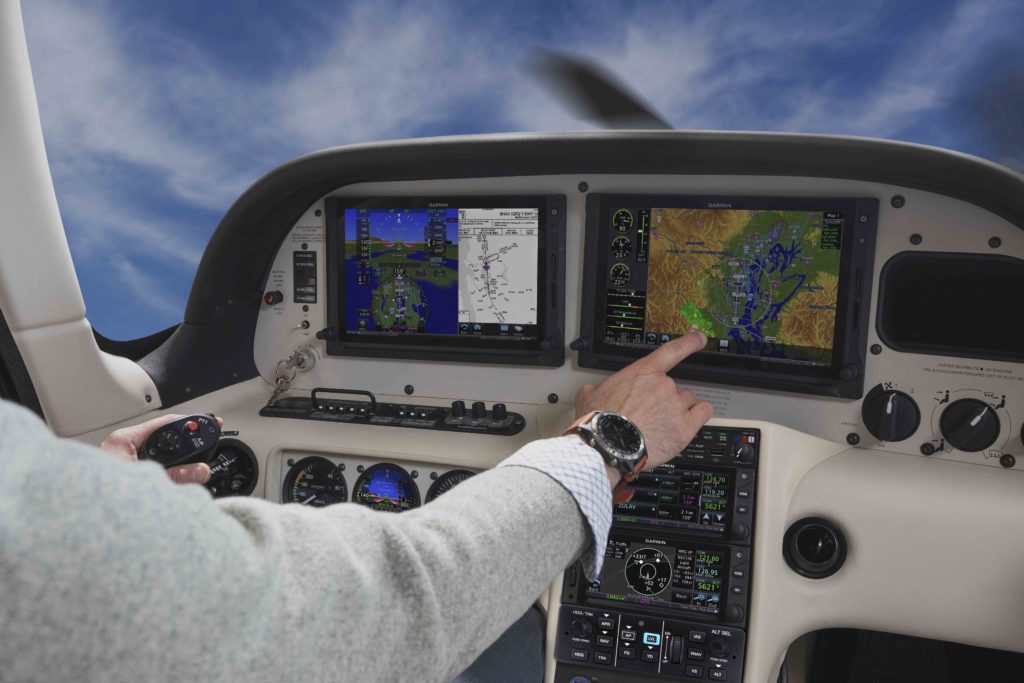
Take full advantage of Garmin avionics features and capabilities with eLearning Courses
Pilots can receive in-depth instruction to better prepare for flights through eLearning courses that guide them through scenarios intended to build understanding and confidence with Garmin avionics. Using a computer, tablet or smartphone, pilots can access the courseware immediately through the eLearning platform. Garmin eLearning courses come with a two-year subscription and can be purchased at www.fly.garmin.com/training.
The following eLearning opportunities are available:
- Garmin GTN Essentials 2.0: This course provides in-depth instruction on the fundamental operation of the highly capable GTN and GTN Xi touchscreen navigators, as well as helicopter features, for pilots that are new to the GTN or just want a refresher.
- Garmin TXi Essentials: For pilots that are new to the system, this course will provide instruction on fundamental operation of the touchscreen flight display.
- Garmin G1000 NXi: Pilots will have four comprehensive courses to choose from that will provide in-depth training on the G1000 NXi depending on the needs of the pilot to enable effective use of the system’s situational awareness and decision-making resources.
- Garmin G3000® Essentials: This eLearning course introduces pilots to the operation and user interface of the G3000 integrated flight deck.
- Garmin G5000® Essentials 2.0 and 2.0 PLUS: Introduces pilots to the operation and user interface of the G5000 integrated flight deck, including the latest features. The G5000 Essentials 2.0 PLUS course includes a separate module that describes autothrottle usage.
- Garmin Aviation Weather Radar 2.0: This course helps pilots understand the fundamentals of weather radar and the latest features to take full advantage of Garmin GWX
 systems.
systems.
Attend monthly one-hour webinars
These scenario-based webinars are offered monthly for no charge and are intended to help pilots explore various avionics setups, flight planning, navigation and other features with Garmin pilot instructors. Webinar options are updated monthly, so please be sure to check back frequently for the latest offerings. To register for Aviation Webinars, please visit Garmin.com/AviationWebinars.
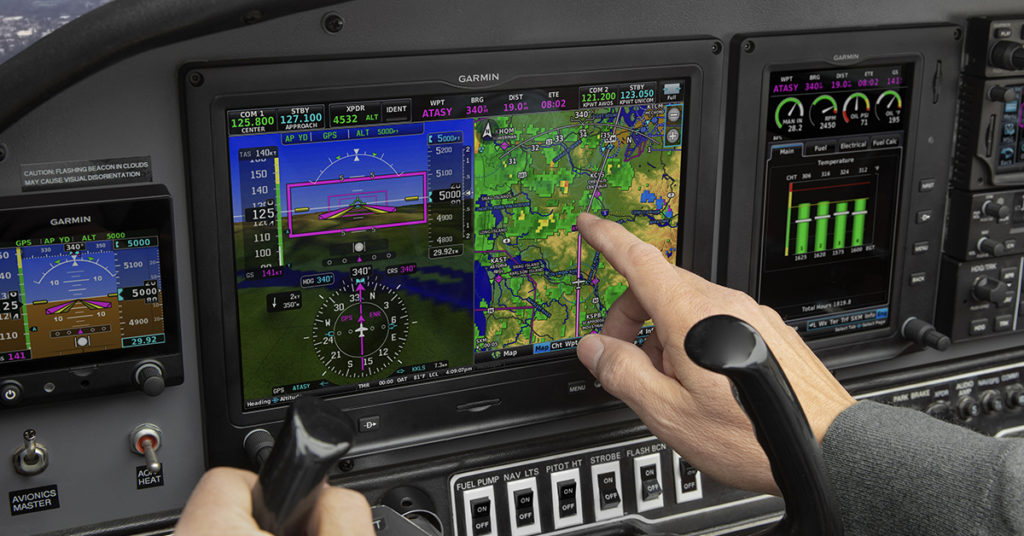
EAA AirVenture 2021
The Garmin Aviation Training team anticipates offering seminars and classes at EAA AirVenture. The team plans to provide two-hour GTN Series training seminars from July 26-30, focusing on what is most important to customers – flight planning and instrument approach procedures. We will also offer the G3X Touch Academy and other GTN pilot training seminars in the Garmin tents. As EAA AirVenture 2021 nears, visit flyGarmin.com/training to see the full and evolving list of training events and to registers for one of these classes.
Build a solid foundation with self-study opportunities
Detailed pilot guides provide extensive information on features, functions, and capabilities related to Garmin avionics that the pilot must know in order to operate the aircraft. Free pilot guides are available for download for all retrofit installations including the GTN series, GTN Xi series, G500/G600, G500/G600/G700 TXi, and G3X Touch. For integrated flight decks such as the G1000, G3000 and G5000, the pilot’s guides are available from the aircraft manufacturer. Training videos and pilot training webinar recordings can be found on the Garmin Aviation YouTube channel.
PC and iPad® Trainers
We also offers a limited number of computer (PC) and iPad trainers that simulate the behavior of an avionics system interface for pilots interested in learning the basic operation of a system. Current PC trainers can be found at www.Garmin.com, and the GTN, GTN Xi, and TXi series trainer apps are available for download from the Apple® App Store®.
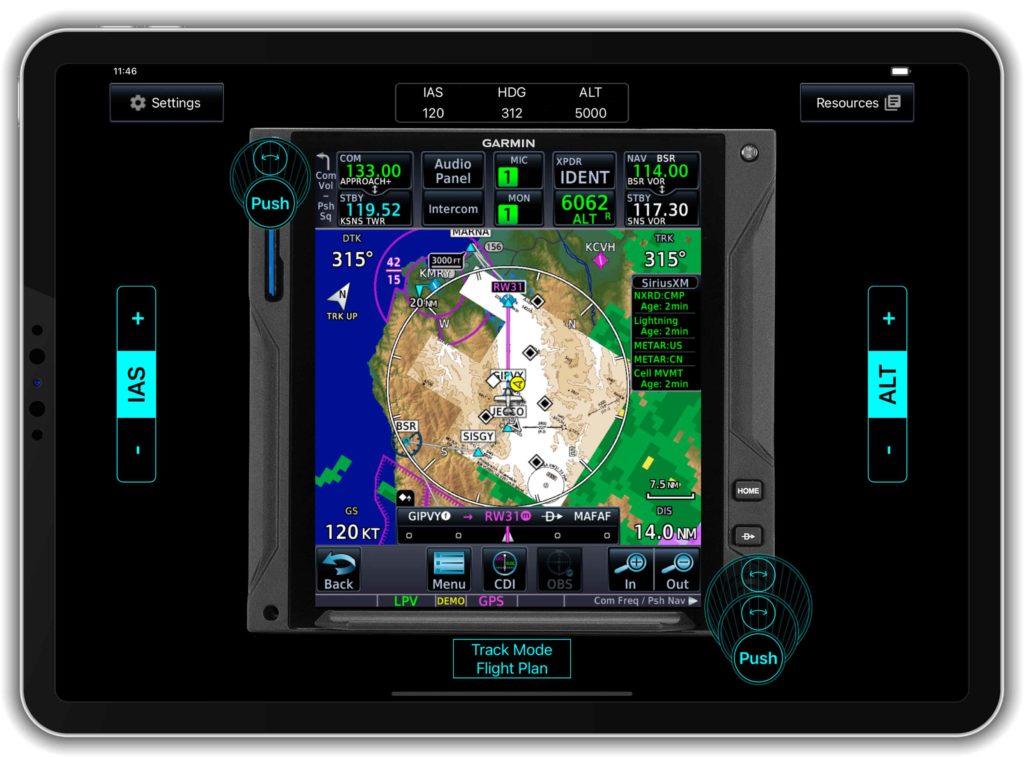
Custom Training Requests
The Garmin Aviation Training team can support on-demand training requests based upon instructor availability and training resource considerations on a first-come, first serve basis. For all Garmin aviation training needs, including reservations for one of these training events, please visit www.fly.garmin.com/training. For additional information, please contact aviation.training@garmin.com.
The post Garmin Pilot Training Team Expands 2021 Opportunities appeared first on Garmin Blog.
https://www.garmin.com/en-US/blog/aviation/garmin-pilot-training-team-expands-2021-opportunities/
Garmin GI 275 Electronic Flight Instrument Receives EASA Approval
Our popular GI 275 electronic flight instrument has received European Union Aviation Safety Agency (EASA) approval, allowing installation in over 1,000 single-engine and multi-engine aircraft models. Several variants of the GI 275 are now available to meet the needs of business and general aviation aircraft. A powerful electronic flight instrument, the GI 275 is suitable as a direct replacement for a variety of legacy primary flight instruments in the cockpit such as the attitude indicator, attitude-direction indicator (ADI), course deviation indicator (CDI), horizontal situation indicator (HSI), multi-function display (MFD), and engine indication system (EIS). In addition, the GI 275 can also be installed as a standby attitude indicator when paired with large format electronic flight displays.
“Garmin worked closely with EASA to bring the popular GI 275 to thousands more cockpits with aging flight instruments,” said Carl Wolf, vice president of aviation sales and marketing. “With this approval, the modern GI 275 electronic flight instrument gives pilots the opportunity to take an economical and scalable approach to their avionics upgrade while realizing tremendous potential with the extraordinary capability of the versatile touchscreen GI 275.”
Lightweight and compact, the GI 275 is a reliable flight instrument intentionally designed to take advantage of the common 3.125-inch flight instrument size, reducing installation time and preserving the existing aircraft panel. Its bright, high-resolution touchscreen display and wide viewing angle offers superior readability in the cockpit. A dual concentric knob allows pilots to access a variety of key functions within the flight instrument, such as adjustments to the baro setting or the airspeed bug. Highly scalable, aircraft owners can start with a single GI 275 and add up to a total of six in a single panel, paving the way for incremental upgrades and an array of individualized panel configurations.
Primary and standby attitude indicator
When installed as a primary attitude indicator, the GI 275 offers improved reliability, potential weight savings and reduced maintenance compared to less reliable, vacuum-driven attitude indicators. When the GI 275 serves as primary for attitude information, pilots can also view altitude, airspeed and heading1 on the instrument. Optional Synthetic Vision Technology overlays a rich, 3D topographic view of terrain, traffic, obstacles, airport signposts and more, all within the GI 275 attitude display2.Additional features include the display of outside air temperature, groundspeed, as well as true airspeed and wind information on the attitude indicator.
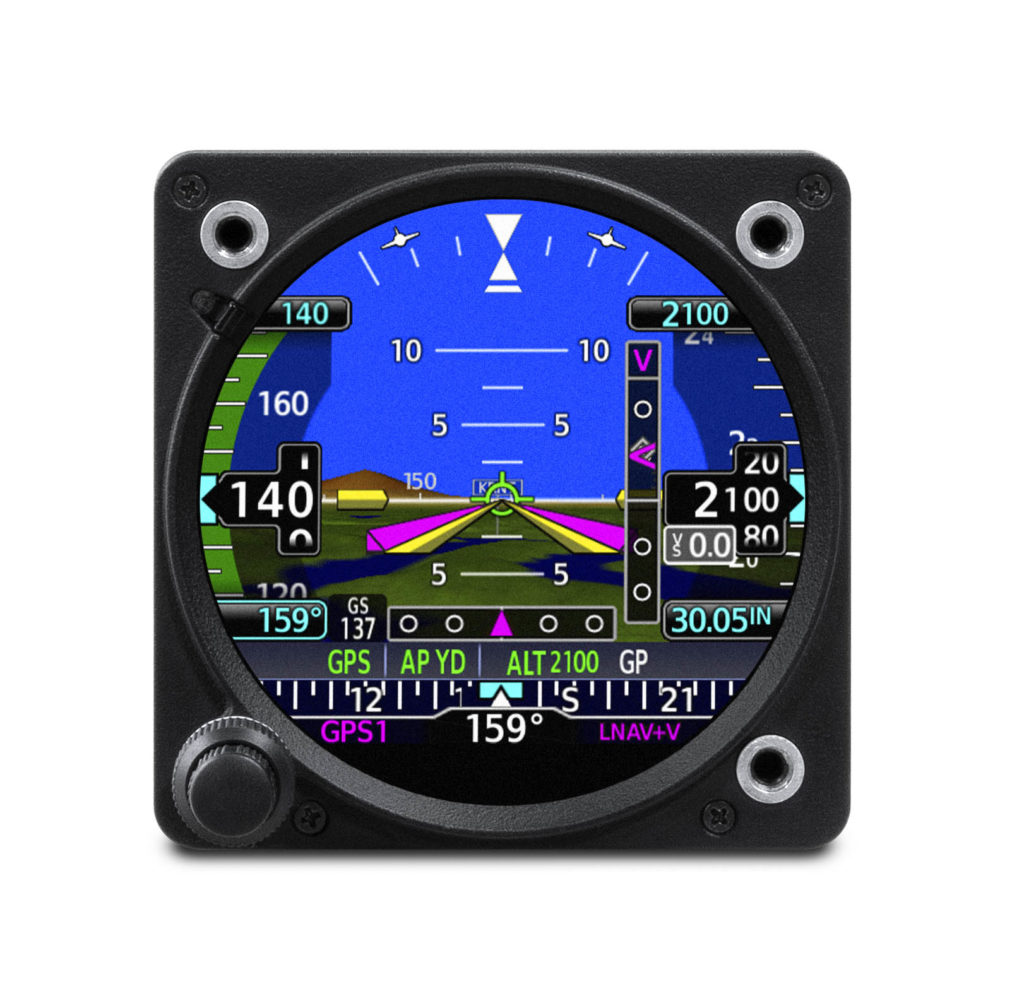
The GI 275 flight instrument is also approved for installation as a dedicated standby flight instrument to Garmin glass flight displays and is capable of serving as a back-up to a variety of third-party flight displays on the market. When installed as a standby flight instrument to the G500 TXi, the GI 275 is capable of displaying additional multifunction display features. In installations where the GI 275 is installed as a primary or standby flight instrument, a 60-minute back-up battery is included.
Course Deviation Indicator (CDI) & Horizontal Situation Indicator (HSI)
When installed as a CDI or HSI, the GI 275 is designed to accept a variety of GPS and navigation inputs, allowing up to two GPS sources and two VHF navigation sources. The GI 275 features an Omni Bearing Resolver that allows the flight instrument to interface to a variety of legacy navigators on the market without the need for an expensive adapter. With an optional magnetometer, it is also capable of providing magnetic-based HSI guidance. Selecting the CDI source is simple and can be accomplished through the touchscreen interface, while course and heading selection is completed using either the touchscreen or dual concentric knob. When aircraft owners replace an older mechanical CDI or HSI, the GI 275 doubles as a modern digital indicator and adds MFD-like capabilities such as a moving map, weather, traffic and terrain.
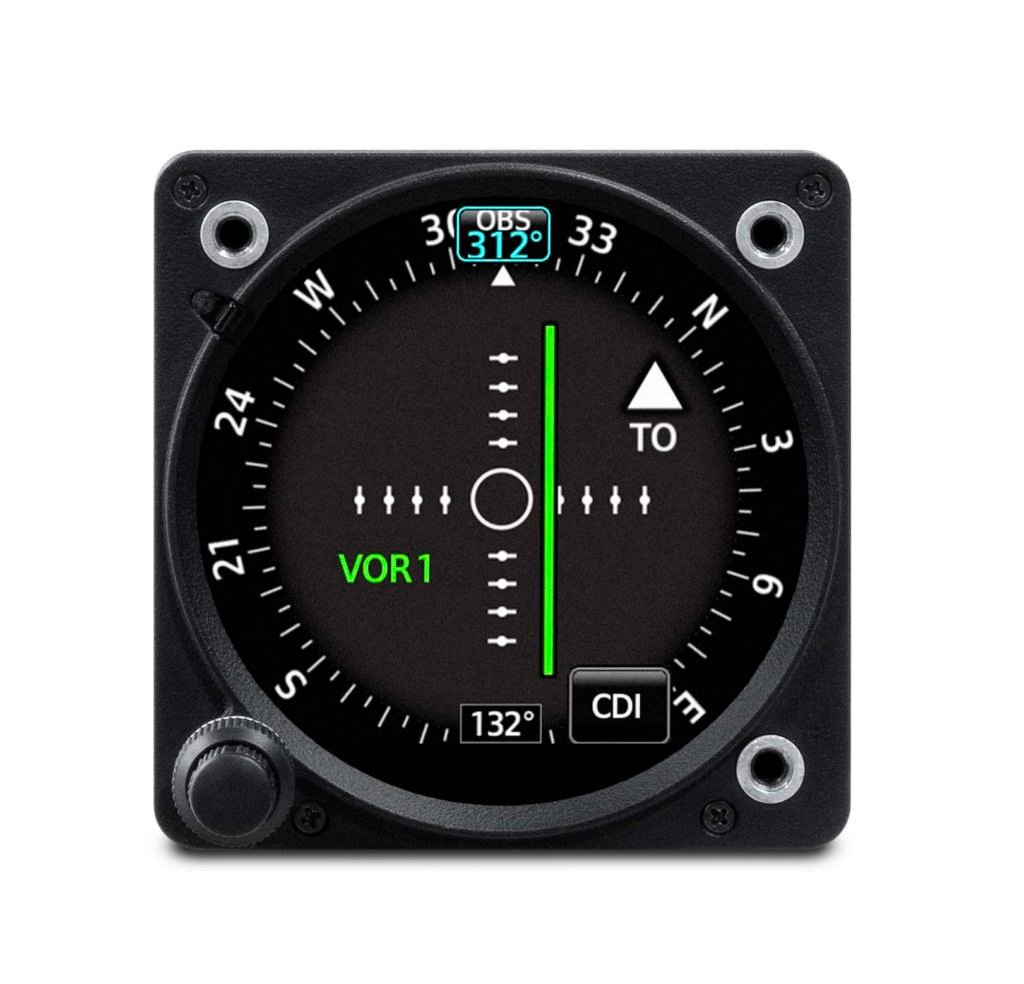
Autopilot compatibility with the GI 275
A single GI 2753 electronic flight instrument can be used as the attitude source to drive the GFC 500 autopilot, while also displaying mode annunciations and flight director indications. For added redundancy in aircraft equipped with a dual GI 275 installation, the secondary GI 2753 is capable of coupling to the GFC 500 autopilot, as well. In the unlikely event of a primary GI 275 failure, the autopilot remains fully functional when paired with the secondary GI 275. Additional redundancy is extended to include the G500 TXi & G600 TXi flight displays, which also allow the GI 275 to couple to the GFC 500 autopilot if needed when serving as a standby instrument. Unique to the GI 275 and TXi, pilots will receive a mis-compare annunciation if the AHRS sources between the two do not align. GI 275 is also compatible with the GFC 600 digital autopilot, as well as a variety of third-party autopilots and does not require a separate interface adapter, further reducing overall cost and installation labor. The GI 275 can replace the primary attitude indicator installed with these autopilots.
Additional capabilities
Depending on the configuration and installation, the GI 275 is capable of displaying additional page functions and features beyond a traditional flight instrument. These features can include:
- A multifunction display (MFD) with a moving map can display terrain, obstacles, traffic, weather, airspace information, airways, and more.
- When interfaced to a GTX 345 or GNX 375, traffic information can be displayed on the dedicated traffic page or moving map. Patented TargetTrend relative motion technology and pop-up traffic alerts further enhance situational awareness.
- The GI 275 can also be interfaced to a variety of traffic systems, including select Traffic Advisory (TAS) and Traffic Alert and Collision Avoidance Systems (TCAS). Traffic advisories are displayed on the dedicated traffic page and moving map.
- SafeTaxi airport diagrams display runways, taxiways, Fixed Based Operators (FBO’s), hangars and more relative to the aircraft’s location on the airport surface.
- Terrain shading incorporates yellow and red contouring depicting the aircraft is 1,000 and 100 feet above ground level (AGL) respectively. Terrain and obstacle information can be viewed on the terrain and map pages.
- The GI 275 uses its internal terrain and obstacle database to provide audible and visual terrain proximity alerts, including, “terrain ahead, pull up” and “obstacle ahead, pull up.”
- Engine information system with optional interface module and GEA 110 sensor has the ability to serve as a primary EIS display for piston engine, fuel, electrical and other data. Dual GI 275 flight instrument installations are able to display engine information for twin-engine aircraft.
- An airport information page displays a variety of data, including frequencies, runway dimensions and more.
- The GI 275 can be paired with the GRA 55/5500 and other third-party products to display radar altimeter on a dedicated page. Visual and aural annunciations are also available.
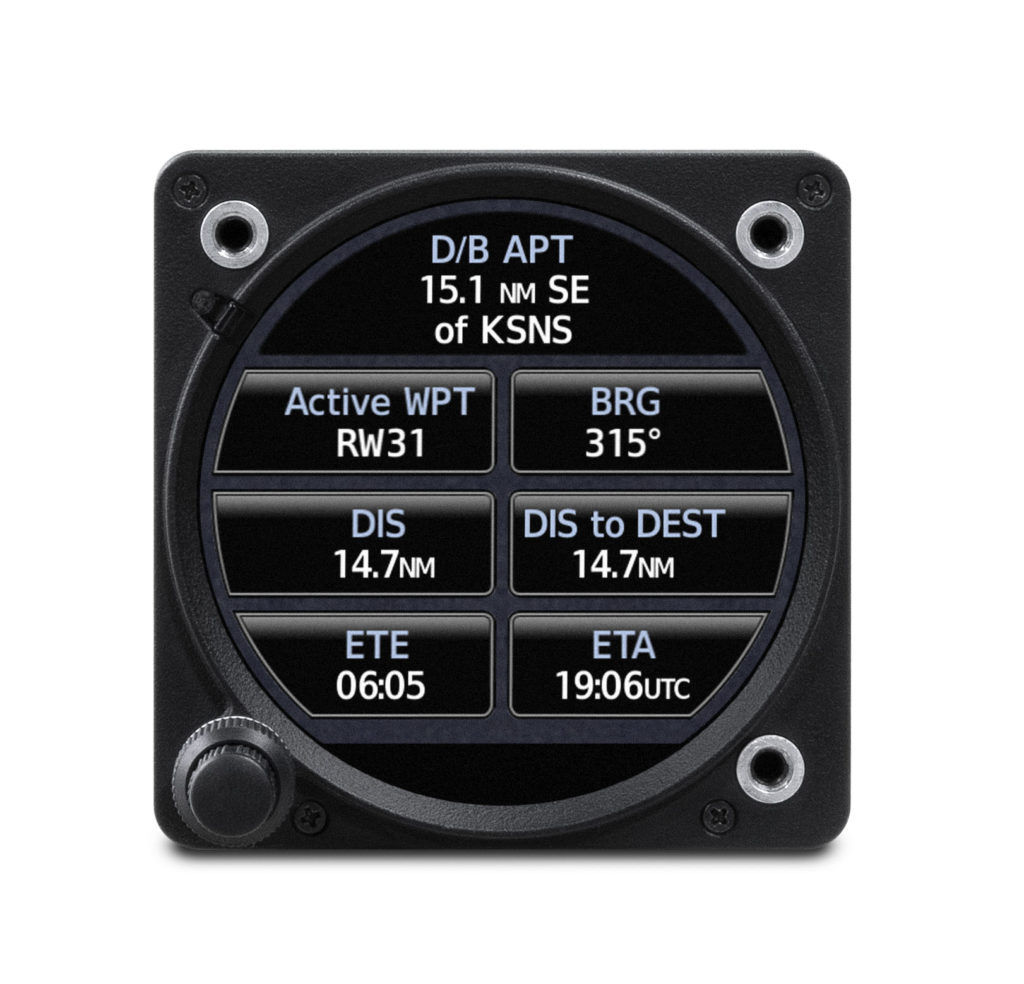
Built-in Wi-Fi enables Garmin’s Database Concierge, the wireless transfer of aviation databases to the GI 275. Pilots also have the option of transferring databases to the GI 275 using a USB flash drive and the GSB 15 USB charger. Databases can also be synced among multiple GI 275 flight instruments in a single cockpit. When configured to display engine information, the GI 275 can wirelessly send engine data to display within the Garmin Pilot app on Apple mobile devices. This data is also automatically synced and can also be viewed and stored on the flyGarmin website. Wireless flight plan transfer via Bluetooth is available when the GI 275 is paired with a GPS 175, GNC 355 or GNX 375. Additional wireless functions include the sharing of GPS position and back-up attitude information with Garmin Pilot.
The GI 275 is available immediately and approved for installation in over 1,000 single-engine and multi-engine aircraft models. Select Class IV aircraft also are approved; visit www.garmin.com/GI275 for additional information. For full installation details, and to purchase the GI 275, contact a Garmin Authorized Dealer. A trial period of SVT also comes with the purchase of a GI 275 when it’s configured as an attitude indicator. The GI 275 also comes with a two-year warranty and is supported by our award-winning aviation support team, which provides 24/7 worldwide technical and warranty support. For the 17th consecutive year, both Aviation International News and Professional Pilot magazine, two predominant aviation publications, awarded the Garmin aviation support team top honors for avionics product support. For additional information, visit www.garmin.com/aviation.
- Requires an optional magnetometer
- Features and functions depend on configuration and variant selected, visit a Garmin Authorized Dealer for additional information.
- Requires GI 275 ADAHRS variant.
The post Garmin GI 275 Electronic Flight Instrument Receives EASA Approval appeared first on Garmin Blog.
https://www.garmin.com/en-US/blog/aviation/garmin-gi-275-electronic-flight-instrument-receives-easa-approval/
Garmin GFC 600 Digital Autopilot Approved for Select King Air C90 and E90 Aircraft
Our GFC 600 digital autopilot has received FAA STC approval in select Beechcraft King Air C90 aircraft and E90 aircraft1. GFC 600 is optimized for turbine aircraft, delivering superior in-flight characteristics and new operational capabilities such as Vertical Navigation (VNAV), automatic Course Deviation Indicator (CDI) switching when paired with a GTN Series navigator, enhanced go-around capability and much more.
600 digital autopilot has received FAA STC approval in select Beechcraft King Air C90 aircraft and E90 aircraft1. GFC 600 is optimized for turbine aircraft, delivering superior in-flight characteristics and new operational capabilities such as Vertical Navigation (VNAV), automatic Course Deviation Indicator (CDI) switching when paired with a GTN Series navigator, enhanced go-around capability and much more.
The GFC 600 certification for the Beechcraft King Air C90 and E90 provides owners and operators an autopilot upgrade that boasts superior integration potential with G600 and G600 TXi flight displays, the GI 275 electronic flight instrument, as well as the GTN and GTN Xi Series of navigators. The self-contained autopilot controller incorporates backlit keys and a bright, sunlight readable display that depicts autopilot status and mode selection. An intuitive built-in control wheel also provides convenient adjustment of aircraft pitch, airspeed and vertical speed modes. When the level button is selected, the aircraft automatically returns to straight-and-level flight.

Environmentally hardened autopilot servos designed for harsh operating conditions contain brushless DC motors offering improved performance and reducing maintenance requirements when compared to decades-old servo designs on the market today. In addition, these servos are optimized for turbine aircraft by offering more torque to help better command and respond to control demands required of turbine aircraft.
Standard mark-width design of the GFC 600 mode controller ensures the autopilot controller allows for routine installation into the aircraft’s avionics stack. Autopilot mode annunciation is available on the G600 TXi touchscreen glass flight display, as well as the G600 flight display. The addition of an optional autopilot annunciator panel also displays the selected autopilot mode in the pilot’s primary field of view and retains an identical footprint of third-party autopilot annunciators on the market.
In addition to traditional autopilot capabilities such as altitude hold, vertical speed and heading modes, the GFC 600 also includes:
- Premium functions and advanced capabilities such as altitude pre-select2 and indicated airspeed hold mode
- Pilots can select, couple and fly various instrument approaches, including GPS, ILS, VOR, LOC and back course approaches3
- Built-in GPS roll steering capability eliminates the need for external roll steering converters, allowing for smoother navigation tracking when installed with a compatible navigator
- Level Mode button, which automatically engages the autopilot to restore the aircraft to straight and level flight
- Underspeed protection helps prevent the pilot from stalling the aircraft
- Overspeed protection helps prevent the pilot from exceeding aircraft maximum speed (VNE)
- Yaw Damping (YD) mode minimizes yawing oscillations while also helping to maintain coordinated flight
- Flight Director command bars can be displayed on flight display such as the G600 and G600 TXi
- Pilots can fly coupled ‘go-arounds’ during missed approach sequencing. A remotely-installed go-around button commands the Flight Director to display the appropriate pitch attitude required for the missed approach procedure and activates a loaded missed approach when paired with a GTN 650/750 or GTN 650Xi/750Xi navigator
- Included pitch-trim servo adds automatic trim and improved manual electric trim
- Control wheel steering is available, which allows the pilot to adjust pitch, roll, altitude hold, vertical speed or airspeed references using the control yoke while the autopilot is engaged
As a standard feature, pilots receive Garmin ESP with the GFC 600 autopilot, which works to assist the pilot in maintaining the aircraft in a stable flight condition. ESP functions independently of the autopilot and works in the background to help pilots avoid inadvertent flight attitudes or bank angles and provide airspeed protection while the pilot is hand-flying the aircraft.
The GFC 600 digital autopilot for the Beechcraft King Air C90/E90 is available immediately through select Garmin authorized dealers. To view the most up-to-date aircraft STC list, to view certifications that are expected to begin in the next 12-months, or to express interest in a specific aircraft make/model for the GFC 600, visit www.garmin.com/GFC600. For additional information, visit: www.garmin.com/aviation.
1. STC approved for Beechcraft King Air C90, C90-1, C90A, C90B, C90SE, C90GT, C90GTi, E90, and does not include those aircraft equipped with Garmin G1000/G1000 NXi, or Collins Pro Line integrated flight decks.
2. Available on GFC 600 or Garmin flight displays.
3. GFC 600 requires an external navigator for navigation and approach functions. See website for additional compatibility information.
The post Garmin GFC 600 Digital Autopilot Approved for Select King Air C90 and E90 Aircraft appeared first on Garmin Blog.
https://www.garmin.com/en-US/blog/aviation/garmin-gfc-600-digital-autopilot-approved-for-select-king-air-c90-and-e90-aircraft/
Garmin Receives Consecutive Supplier of the Year Awards from Embraer
Embraer awarded the Garmin aviation team with its 11th Supplier of the Year award in the past 10 years. The Supplier of the Year distinction was presented in the Electric and Electronic Systems category for the G3000® Prodigy Touch flight deck systems in the Phenom 100EV and Phenom 300E.
“We are honored to receive consecutive Supplier of the Year awards from Embraer,” said Carl Wolf, Garmin vice president of aviation sales and marketing. “These honors go beyond the product; they represent the strong collaboration between Garmin and Embraer resulting in a terrific in-flight experience for our mutual customers. It is truly rewarding and motivating for our employees to receive eleven Supplier of the Year awards over the ten-year period”
Embraer recognized a select group of elite suppliers for their outstanding performance in various categories. The 2019 Electric and Electronic Systems award recognizes design innovation, ease of use and overall system architecture, as well outstanding efforts in production line support, quality and on-time reliability of the supply chain. This award also distinguishes our commitment to design and manufacture state-of-the-art flight deck systems, while being responsive to market needs and preferences.
This is the 11th supplier award presented to Garmin by Embraer.
- 2019: Electric & Electronic Systems
- 2018: Electric & Electronic Systems
- 2017: Technical Support to Operator
- 2017: Electro – Electronic Systems
- 2016: Electro – Mechanical Systems
- 2015: Electro – Mechanical Systems
- 2015: Material Support to Operator
- 2014: Material Support to Operator
- 2011: Electro – Electronic Systems
- 2011: Technical Support to Operator
- 2010: Electro – Electronic Systems
Among hundreds of suppliers, best supplier recipients undergo stringent evaluation and are recognized as having shown outstanding performance, continuous improvement and increased customer satisfaction among all other suppliers in their respective categories. Nine award categories were presented among Embraer’s entire aircraft portfolio, including Executive Aviation, Defense, and Commercial Aircraft. Suppliers are considered based on several attributes, including innovation, delivery, quality, reliability, flexibility and customer support.
The post Garmin Receives Consecutive Supplier of the Year Awards from Embraer appeared first on Garmin Blog.
https://www.garmin.com/en-US/blog/aviation/garmin-receives-consecutive-supplier-of-the-year-awards-from-embraer/
More Effectively Manage Engines, Fuel with Garmin Engine Indication System
The benefits of digital engine indication systems (EIS) go far beyond replacing an aging system in your aircraft. These modern, reliable solutions can offer significant improvements over older, maintenance-prone analog instruments. They also can present crucial engine and fuel information with enhanced precision. Streamlined displays with intuitive user interfaces can help reduce pilot workload, improve engine and fuel management, and add overall confidence in the cockpit. Our broad range of EIS solutions were designed with these principles in mind. From our compact GI 275 EIS to our larger format EIS TXi and G3X Touch , we have an EIS solution for nearly every aircraft type and operator budget.
, we have an EIS solution for nearly every aircraft type and operator budget.
GI 275 EIS: Convenient size, powerful capabilities
Don’t be fooled by the size of our GI 275 EIS. Designed to fit a standard 3-1/8” instrument cutout, this stand-alone touchscreen solution provides engine, fuel, electrical information and more in a convenient, cost-effective package. Plus, with minimal or no panel modifications required for installation, GI 275 proves ideal for aircraft owners looking to keep the classic look of their panel. It graphically displays cylinder head and exhaust gas temperatures, features lean assist mode, and monitors fuel quantity and fuel flow to estimate how much fuel, range and flight time remains.
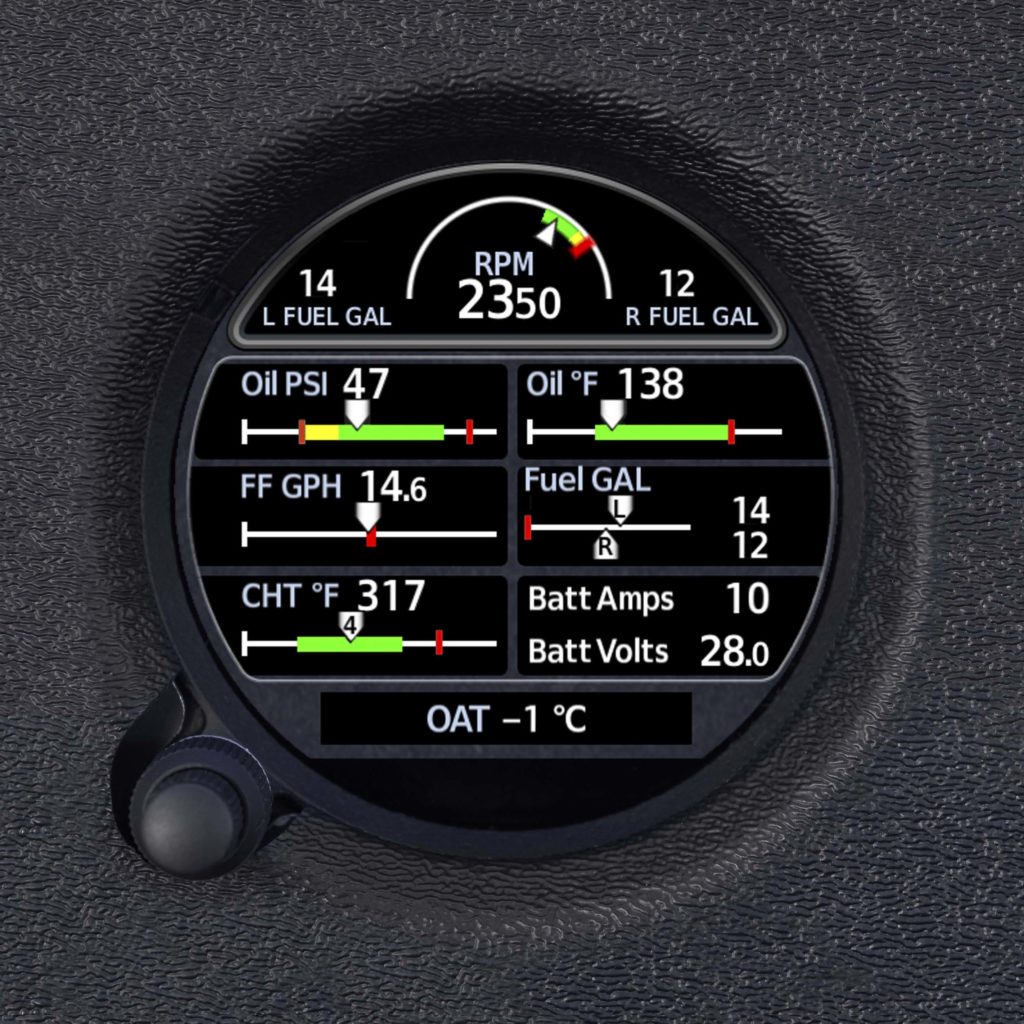
EIS TXi: Larger display, broader aircraft applicability
Looking for more display real estate to monitor engines and fuel? Our dedicated EIS TXi presents the same essential engine, fuel and electrical information as the GI 275 EIS but with a few more features on a larger touchscreen format – available in 7” landscape or 7” portrait options. It’s available for most normally aspirated or turbocharged Lycoming/Continental 4- to 6-cylinder singles and twins, as well as select single engine turboprop aircraft.
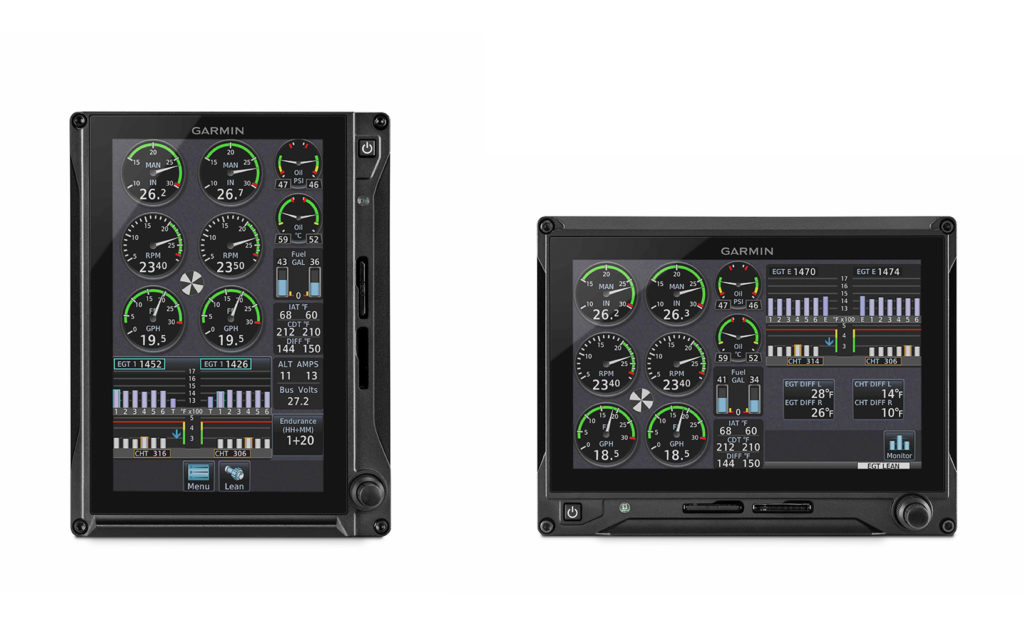
For turboprop operators, EIS TXi can display dynamic gauge range markings for torque, prop RPM, Ng percent, interstage turbine temperature and more. Automatic, color-coded data bands based on the aircraft’s current condition will illuminate, with automatic timers and exceedance warnings prompting visual cues to flash, highlighting each out-of-limit parameter.
Integrate EIS with PFD, MFD on G500/G600 TXi, G3X Touch
Some pilots prefer a panel layout with more integration and fewer displays. Our G500/G600 TXi and G3X Touch flight displays can combine EIS information with PFD and MFD capabilities in several sizes and configurations, providing an “all-in-one” flight display solution.
For panel upgrades with space for more than one display, both the TXi and G3X Touch series offer a stand-alone EIS/MFD combination. In this layout, available for single-engine piston aircraft, the EIS indications can be viewed in either an expanded format or a condensed strip on the touchscreen, allowing pilots to view MFD information next to the engine information. The opportunities TXi and G3X Touch offer to integrate allow expanded flexibility and functionality in individual displays.
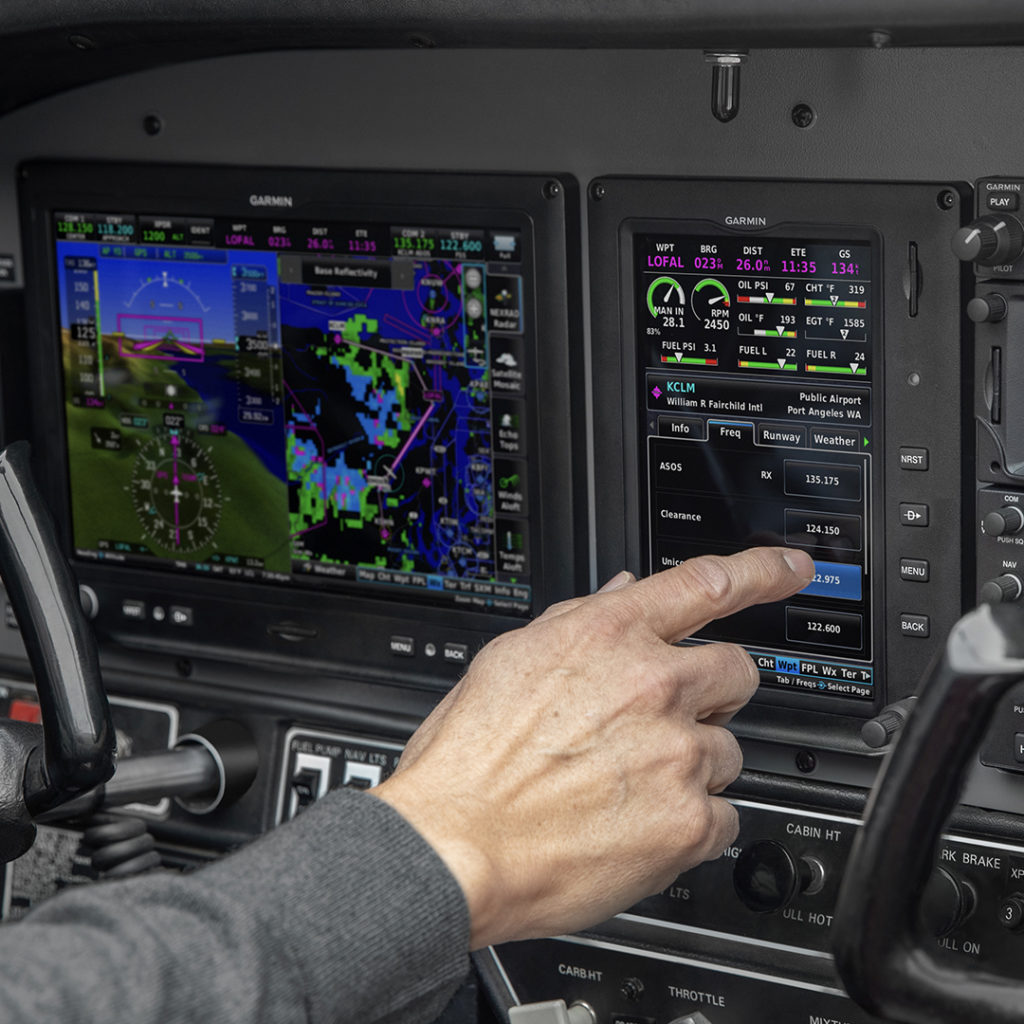
Customizable exceedance alerting and engine performance data logging
Predefined and pilot-selectable exceedance alerting comes standard with GI 275 EIS, EIS-capable TXi and G3X Touch flight displays. During installation, predefined limits are set for engine temperatures, oil pressure and more. After the install is completed, pilot-selectable alerts can be configured by operators to provide an extra level of protection. These pilot-selectable alerts are intended to signal the pilot before an exceedance is reached. Both predefined and pilot-selectable alerts prompt flashing cues, helping to identify potential out-of-limit exceedances and maintain long-term engine performance and overall health.
These EIS solutions can automatically log engine performance data for post-flight analysis. With the EIS-capable GI 275, data is automatically logged within the instrument, then can be wirelessly transmitted to a compatible mobile device downloaded with the Garmin Pilot app. Our G3X Touch displays log data to an SD
app. Our G3X Touch displays log data to an SD card installed in the display, which can be manually uploaded to flyGarmin.com or wirelessly transmitted to Garmin Pilot. EIS-equipped TXi displays automatically log engine data within the display too, and a Flight Stream 510 (sold separately) can wirelessly transmit EIS data to Garmin Pilot. In fact, engine performance data can be wirelessly transmitted to and displayed on Garmin Pilot in-flight. After landing, and engine data is transmitted to Garmin Pilot, it is automatically uploaded to flyGarmin.com and available for post-flight review. All information in flyGarmin.com is stored securely within our web-based cloud service.
card installed in the display, which can be manually uploaded to flyGarmin.com or wirelessly transmitted to Garmin Pilot. EIS-equipped TXi displays automatically log engine data within the display too, and a Flight Stream 510 (sold separately) can wirelessly transmit EIS data to Garmin Pilot. In fact, engine performance data can be wirelessly transmitted to and displayed on Garmin Pilot in-flight. After landing, and engine data is transmitted to Garmin Pilot, it is automatically uploaded to flyGarmin.com and available for post-flight review. All information in flyGarmin.com is stored securely within our web-based cloud service.
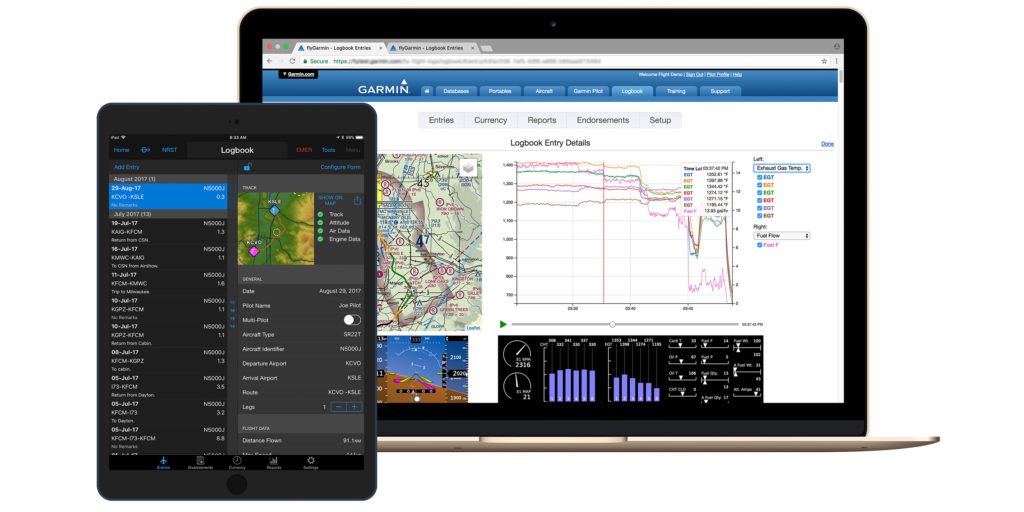
To learn more about all of our EIS solutions and latest avionics, visit Garmin.com/aviation.
The post More Effectively Manage Engines, Fuel with Garmin Engine Indication System appeared first on Garmin Blog.
https://www.garmin.com/en-US/blog/aviation/more-effectively-manage-engines-fuel-with-garmin-engine-indication-system/
Smart Rudder Bias: Safety-Enhancing Technology for Select Twin-Engine Piston Aircraft
Our GFCTM 600 digital autopilot has been upgraded to feature new safety-enhancing capabilities, including Smart Rudder Bias for select piston twin-engine aircraft. Part of our AutonomiTM family of automated flight technologies, Smart Rudder Bias provides additional assistance against hazardous effects of a one-engine inoperative (OEI) event when appropriately equipped. It also provides pilots assistance in maintaining control of the aircraft while determining the next course of action, simultaneously reducing workload in a high-stress and time-critical flight environment.
“We are proud to be able to offer a new safety tool for twin-engine piston aircraft with the introduction of Smart Rudder Bias, making the GFC 600 digital autopilot the most advanced solution for this class of aircraft on the market today” said Carl Wolf, Garmin vice president of aviation sales and marketing. “With the introduction of Smart Rudder Bias technology, working together with the other Garmin systems onboard, pilots can react to an engine failure by quickly and accurately detecting the issue while simultaneously receiving automatic assistance applying the correct flight control input – providing an additional safety tool not seen before in twin-engine piston aircraft.”
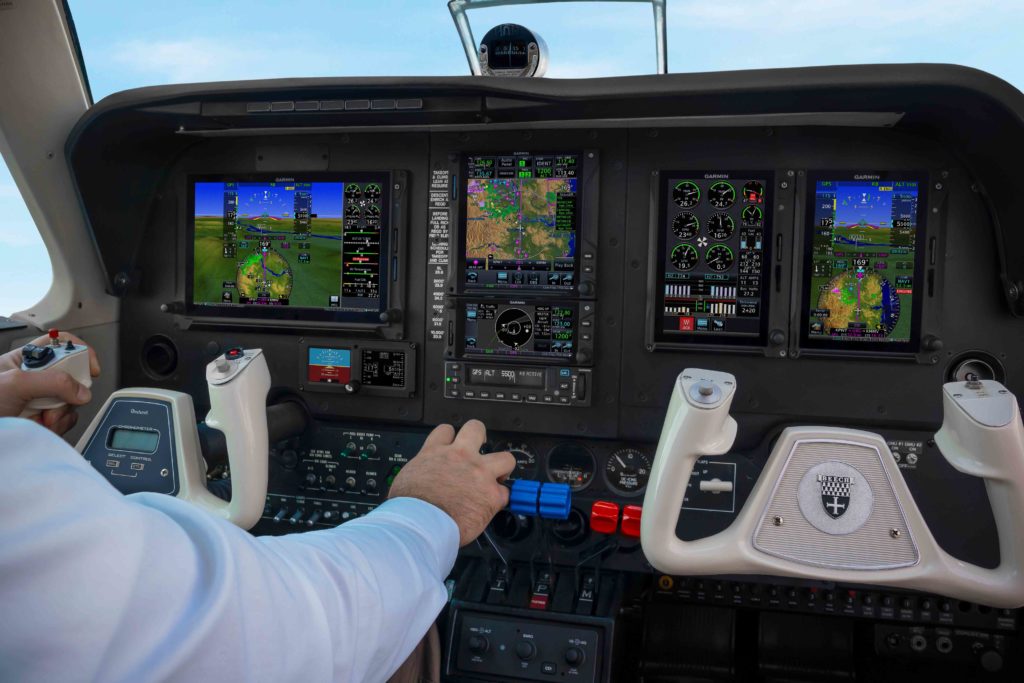
Help manage aerodynamic performance with Smart Rudder Bias
Twin-engine aircraft inherently have aircraft controllability concerns in the event of an engine failure and pilots can expect a significant yaw toward the inoperative engine, resulting in an unstable aircraft state. In addition, due to a sideslip condition and a windmilling propeller, there can be decreased lift on the wing associated with the inoperative engine and simultaneously an increase in drag, all factors contributing to degraded performance and a critical loss in airspeed. Through close integration with multiple onboard Garmin systems, Smart Rudder Bias helps address these major concerns and immediately assists with controllability issues. This gives the pilot time to take the correct action required in order to better maintain positive aircraft control and help keep the aircraft in a safe flight condition.
Positively identify inoperative engine quicker
When the aircraft reaches the manufacturer’s published minimum control speed (VMC) during the takeoff roll, Smart Rudder Bias is automatically armed. Smart Rudder Bias continuously monitors engine parameters using Engine Indication System (EIS) data displayed on a G500 TXi or G600 TXi flight display and activates when the system detects a predetermined power differential between each engine. Once activated, rudder force is dynamically adjusted to aid a pilot in providing enough force to the rudder to help control a sideslip. A yellow annunciator for the associated inoperative engine is conveniently displayed along with autopilot annunciations on the G500 TXi or G600 TXi flight display, helping the pilot identify the issue quicker. Smart Rudder Bias can be deactivated via a panel-mounted switch.
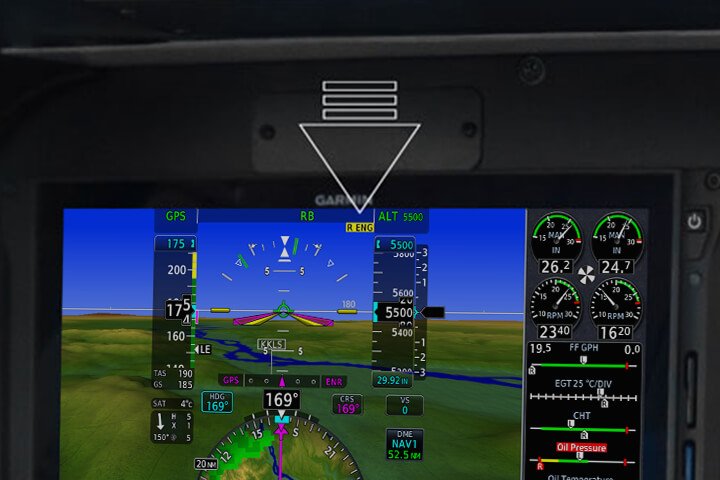
Smart Rudder Bias enhances ESP settings for OEI condition
Garmin’s Electronic Stability and Protection (ESPTM) functions independently of the autopilot, working in the background to help pilots avoid inadvertent flight attitudes or bank angles and provides airspeed protection while the pilot is hand-flying the aircraft. Smart Rudder Bias applies enhanced ESP settings tailored to engine-out flight. Roll protection is modified to help correct for the roll tendency caused by the inoperative engine, while underspeed protection activates at a higher airspeed to help keep the aircraft away from the critical VMC speed and the associated loss of positive aircraft control.
PA-31 certified with GFC 600 – optional yaw trim also available
The GFC 600 is also now certified on select Piper PA-31 aircraft, and an automatic yaw trim option is available. Similar to pitch trim, yaw trim allows for manual rudder trim control with the press of a button, and automatic control of the rudder trim when the GFC 600 autopilot or yaw damper is engaged.
Smart Rudder Bias requires a G500 TXi or G600 TXi configured as a primary flight display (PFD) with EIS, which can be shown as a strip on the G500 TXi or G600 TXi, or on a separate TXi display. Additionally, a GFC 600 digital autopilot with the yaw axis option must be installed. Initial certified aircraft with Smart Rudder Bias capability include the Beechcraft Baron 58 and 58A, as well as the Piper PA-31-300, PA-31-310, PA-31-325, and PA-31-325CR. Additional certifications of Smart Rudder Bias will be forthcoming.
For additional information about Smart Rudder Bias and the Garmin Autonomi family of automated flight technologies, visit www.Garmin.com/SmartRudderBias.
The post Smart Rudder Bias: Safety-Enhancing Technology for Select Twin-Engine Piston Aircraft appeared first on Garmin Blog.
https://www.garmin.com/en-US/blog/aviation/smart-rudder-bias-safety-enhancing-technology-for-select-twin-engine-piston-aircraft/
Popular Science Tabs Garmin Autoland One of 2020’s Greatest Innovations
Popular Science, one of America’s oldest and most trusted magazine brands with a legacy of reporting on groundbreaking innovations, recognized Garmin Autoland with a 2020 Best of What’s New Award in the Aerospace category. Autoland is part of our Autonomi family of autonomous safety-enhancing technologies for aircraft, and the world’s first system of its kind for general aviation aircraft. It has the ability to land an aircraft in an emergency should the pilot suddenly become incapacitated or unable to fly1.
After reviewing thousands of products in search of the year’s top 100 innovations, Popular Science unveiled the best breakthrough products and technologies that represent significant advancements and ‘solve an unsolvable problem’ in an announcement last week.
“We are truly humbled and proud to be selected by Popular Science with this honor for our revolutionary Autoland autonomous flight technology,” said Phil Straub, Garmin executive vice president and managing director, aviation. “This recognition highlights our commitment to innovate in the aviation industry. It’s a testament to the entire Garmin team, whose dedication to continuously drive our pioneering vision led to the development of the world’s first Autoland system for general aviation aircraft and changed the way we look at aviation safety.”
For 33 years, the editors at Popular Science have reviewed thousands of products in search of the top 100 tech innovations each year – breakthrough products and technologies that represent significant advancements in their categories. The publication’s Best of What’s New Awards are presented to 100 new products and technologies in 10 categories: Aerospace, Automotive, Engineering, Entertainment, Gadgets, Health, Home, Personal Care, Security, and Sports & Outdoors. Garmin Autoland was chosen among nine other innovations in the Aerospace category, which includes anything that flies or pertains to flight.
“The Best of What’s New Awards showcase the year’s greatest feats of human ingenuity,” said Popular Science Editor-in-Chief Corinne Iozzio. “Even in a year like 2020, innovation has helped us glimpse a future that’s safer, smarter, and more enjoyable than we might have thought possible.”
Garmin Autoland is available as part of the G3000® integrated flight deck on select general aviation aircraft. In the event of an emergency, such as pilot incapacitation, Autoland is capable of completely taking control of the aircraft, avoiding weather and terrain, and landing at the nearest, most suitable airport. Elements taken into consideration when identifying the most suitable airport include a wide range of performance, operational and environmental factors. Throughout an Autoland activation, the system provides simple visual and verbal communications in plain-language so passengers in the aircraft know what to expect. Further, the system will automatically communicate with air traffic control, advising controllers and pilots operating near the aircraft of its location and its intentions.
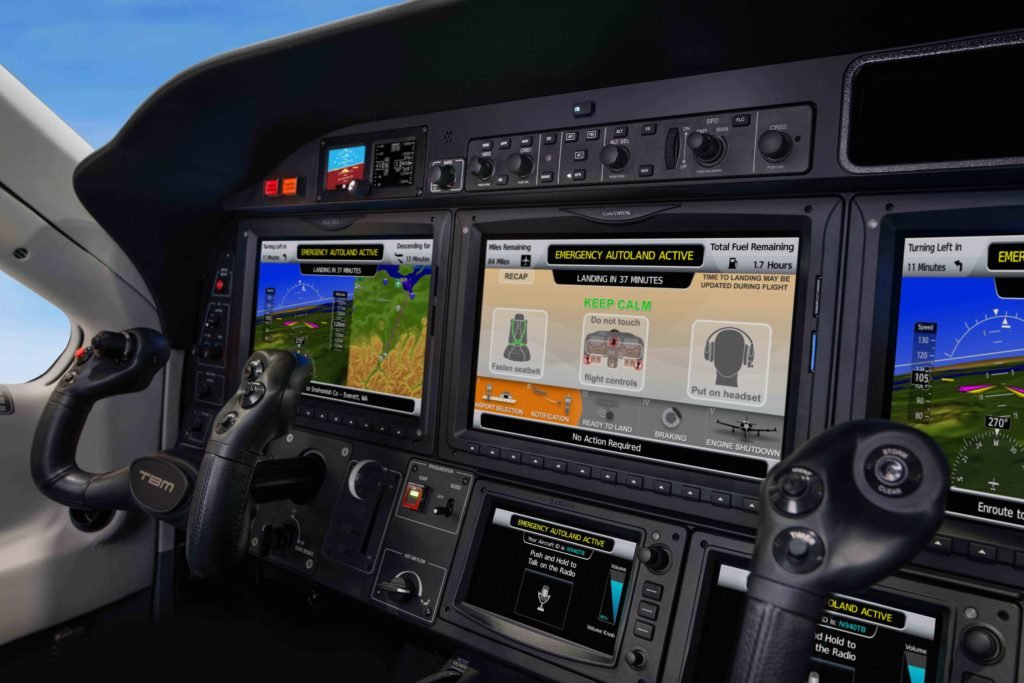
On approach to land, the system initiates a controlled descent to the airport. Once in landing configuration, the aircraft begins its descent to the runway. On the runway, automatic braking is applied while tracking the runway centerline to bring the aircraft to a full stop. Engine shutdown is also automated so occupants can safely exit the aircraft.
The first certified Autoland system for general aviation aircraft, Garmin Autoland has received FAA certification in the Piper M600, the Daher TBM 940, and the Cirrus Vision Jet as part of the G3000 integrated flight deck. EASA approval was also recently granted to the TBM 940. By the end of 2020, more than 100 fielded aircraft are expected to feature Autoland.
For additional information about Autoland and the Garmin Autonomi family of automated flight technologies, visit www.garmin.com/Autonomi.
family of automated flight technologies, visit www.garmin.com/Autonomi.
The post Popular Science Tabs Garmin Autoland One of 2020’s Greatest Innovations appeared first on Garmin Blog.
https://www.garmin.com/en-US/blog/aviation/popular-science-tabs-garmin-autoland-one-of-2020s-greatest-innovations/
New Safety-Enhancing Features for GTN Xi Series Navigators
Our GTN Xi Series of navigators now feature even more advanced capabilities, including a Glide Range Ring that helps safety-minded pilots visualize the estimated area an aircraft could reach in the case engine power is lost1. Other new features include the ability to remotely control the radios of another GTN Xi when dual GTN Xi units are installed in an aircraft, quicker page navigation with the addition of customizable dual concentric knob functions, and more.
Xi Series of navigators now feature even more advanced capabilities, including a Glide Range Ring that helps safety-minded pilots visualize the estimated area an aircraft could reach in the case engine power is lost1. Other new features include the ability to remotely control the radios of another GTN Xi when dual GTN Xi units are installed in an aircraft, quicker page navigation with the addition of customizable dual concentric knob functions, and more.
Glide Range Ring
The new Glide Range Ring helps pilots enhance their situational awareness by depicting the estimated area that the aircraft can reach when it’s configured for best glide range in the case of an engine failure. It considers terrain data, as well as wind data when provided by a GDL 69 or FIS-B Source, or calculated winds from a compatible Garmin fight display2, in order to help pilots continuously plan while flying. Further, G500 TXi or G600 TXi flight displays can also show the Glide Range Ring when paired with the GTN Xi while using the GTN Xi GPS guidance as the horizontal situational indicator (HSI) source.
or G600 TXi flight displays can also show the Glide Range Ring when paired with the GTN Xi while using the GTN Xi GPS guidance as the horizontal situational indicator (HSI) source.
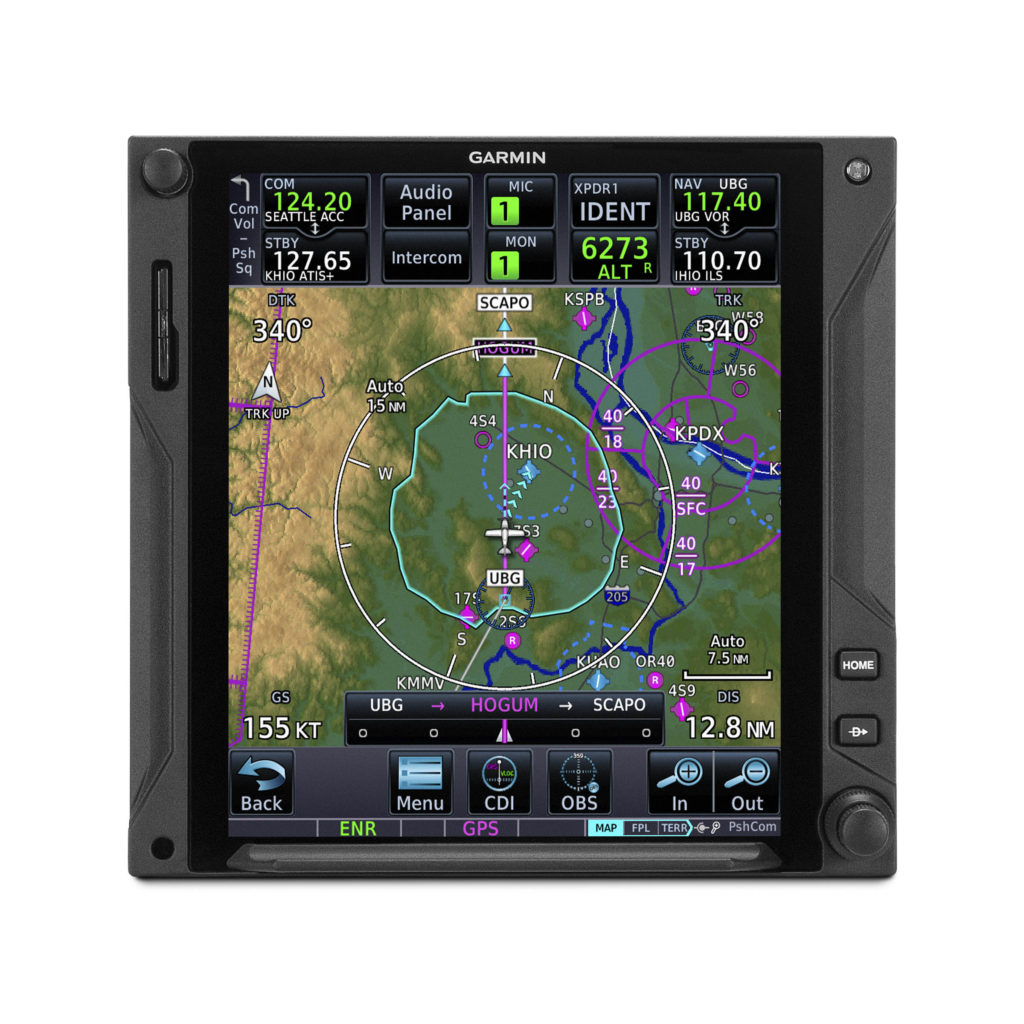
Best Glide Airport Indicator
Depicted as cyan chevrons pointing to the recommended airport for the aircraft to glide to from its current position, the Best Glide Airport Indicator1 is selected based upon distance from present location, runway length at the airport, wind data, and airport weather through FIS-B or Sirius XM if available on the aircraft. If desired, the Best Glide Airport Indicator can be displayed by itself or with the Glide Range Ring also shown.
Nearest Airport list updated to show Glide Check
The Nearest Airport list now indicates which airports are estimated to be reachable on glide by displaying a green check mark indication next to the airport identifier1. If the pilot’s criteria for nearest airports would have excluded an airport that is estimated to be within glide range, the system will automatically add these airports back to the Nearest Airport list and display the Glide Check, while also highlighting the runway length and surface type with a white box if these figures do not meet the previous nearest airport criteria set by the pilot.
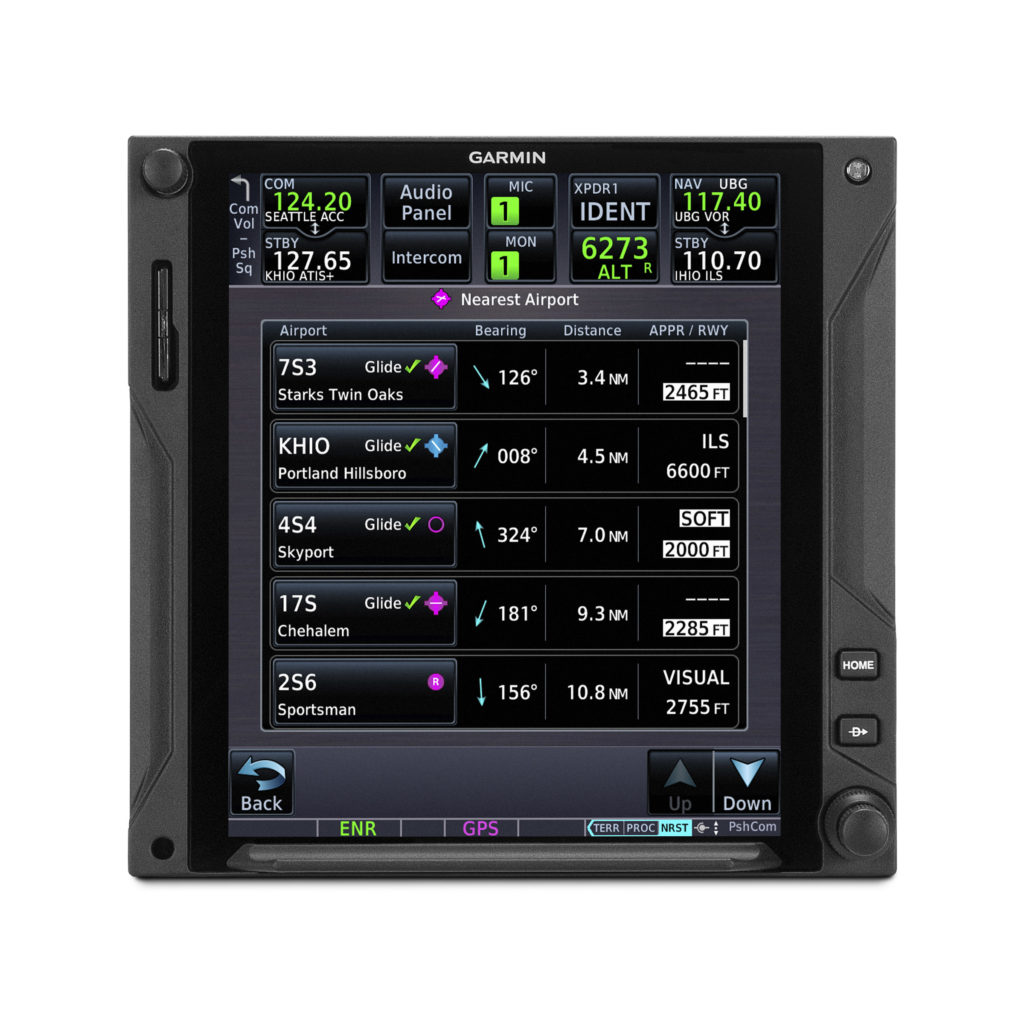
Remote radio control and new radios page
When dual GTN Xi navigators are installed, pilots can now remotely control and tune the radio frequencies on both units from a single GTN Xi navigator. Pilots can control both the Comm and Nav radio tuning, in addition to volume level, which is an especially useful function for quick radio tuning in a busy flight environment. Additionally, pilots can cycle through radios of both GTN Xi navigators by pressing the dual concentric knob on just one GTN Xi. A new radios page displays all Comm and Nav frequencies (active and standby) of both units, as well as volume levels. The radios page can be quickly accessed from the frequency keypad page or as a preset user field button. From this page, pilots can easily flip the respective active and standby frequencies. Also new, pilots can load a frequency to the active or standby position of either GTN Xi from applicable airport or waypoint information pages.
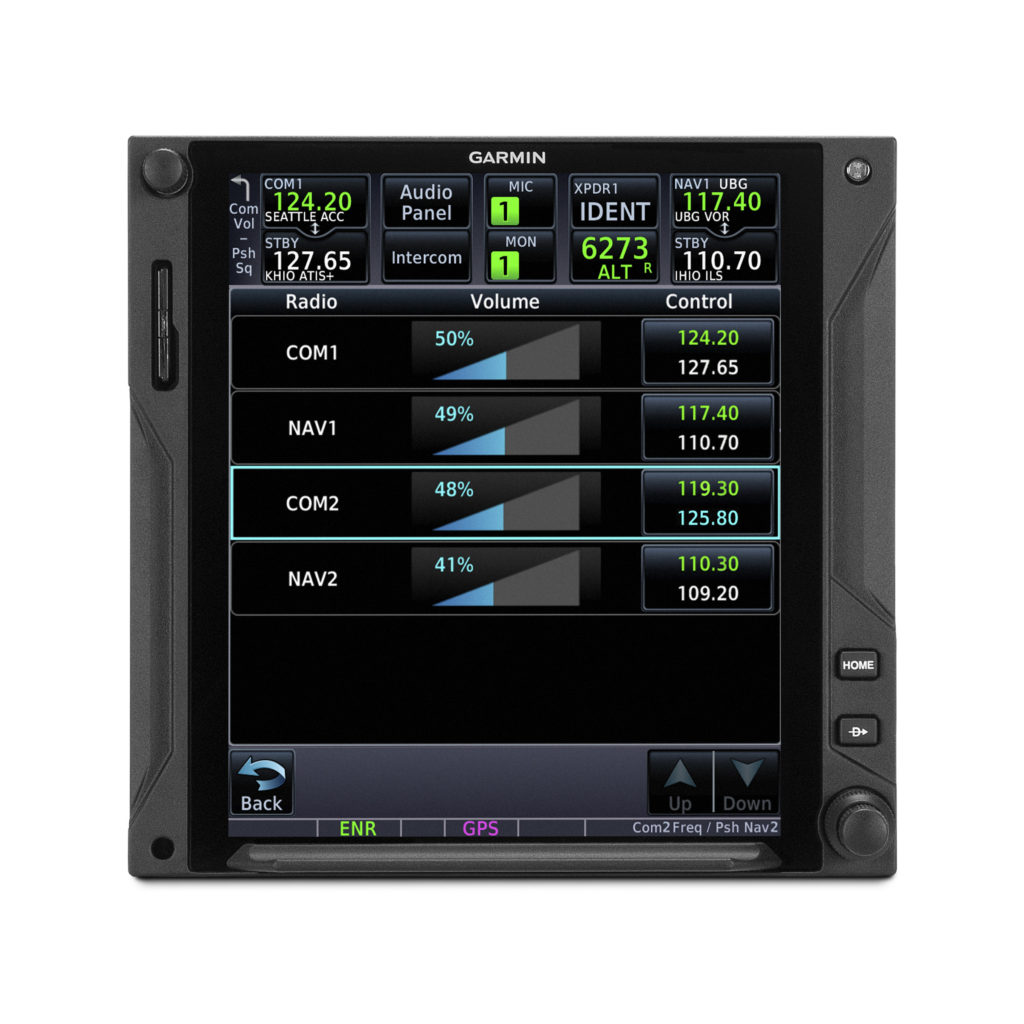
Quicker page navigation with dual concentric knob
Similar to other Garmin navigators, the dual concentric knob can now enable quicker access to select pages. The outer knob now allows the pilot to intuitively cycle between pages on their GTN Xi, while the inner knob can now support functionality related to the current page being displayed, such as scrolling through lists or zooming in on maps. A new locator bar works in conjunction with the outer knob and indicates the current page while also displaying which page is next. Pilots can allocate and customize up to nine pages to be controlled by the outer knob including Map, Nav, Flight Plan, Traffic, Weather, Fuel Planning, and many more.
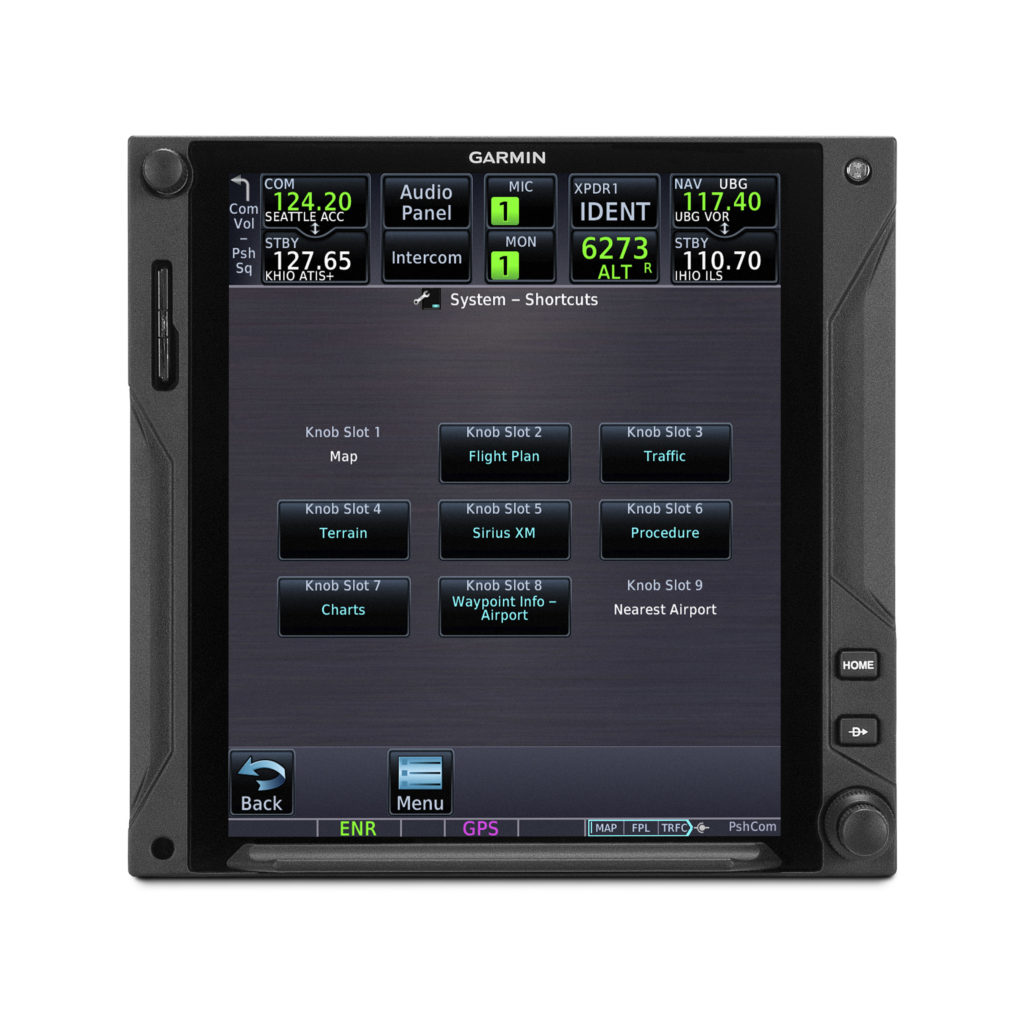
Other GTN Xi series improvements
Additional features of the latest GTN Xi update include:
- New user fields such as the ability to display Flight ID, a radios page shortcut, the current time (including seconds), distance and bearing from a selected waypoint, and current position formatted in latitude and longitude;
- Database sync with Garmin GPS 175, GNC 355, and GNX 375;
- Ability to select a default page to display on startup;
- Shortcut to view charts after tapping on airport, departure, arrival or approach from the Flight Plan page;
- And an option to inhibit terrain alert pop-ups and mute traffic alert pop-ups.
These updates for the GTN Xi series of navigators will be available later this month through the Garmin dealer network. A dealer installation charge may apply. The GTN Xi Series also comes with a two-year warranty, which is supported by our award-winning aviation support team. For additional information, visit https://www.garmin.com/GTNXi or contact a local Garmin authorized dealer.
1. Requires additional configuration steps during software upgrade. See Garmin dealer for details.
2. Compatible flight displays include G500/G600 TXi, G500/600, G3X Touch, GI 275, and G5 (with GAD 13/GTP 59).
The post New Safety-Enhancing Features for GTN Xi Series Navigators appeared first on Garmin Blog.
https://www.garmin.com/en-US/blog/aviation/new-safety-enhancing-features-for-gtn-xi-series-navigators/
